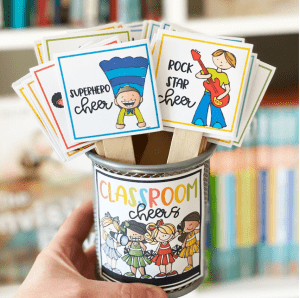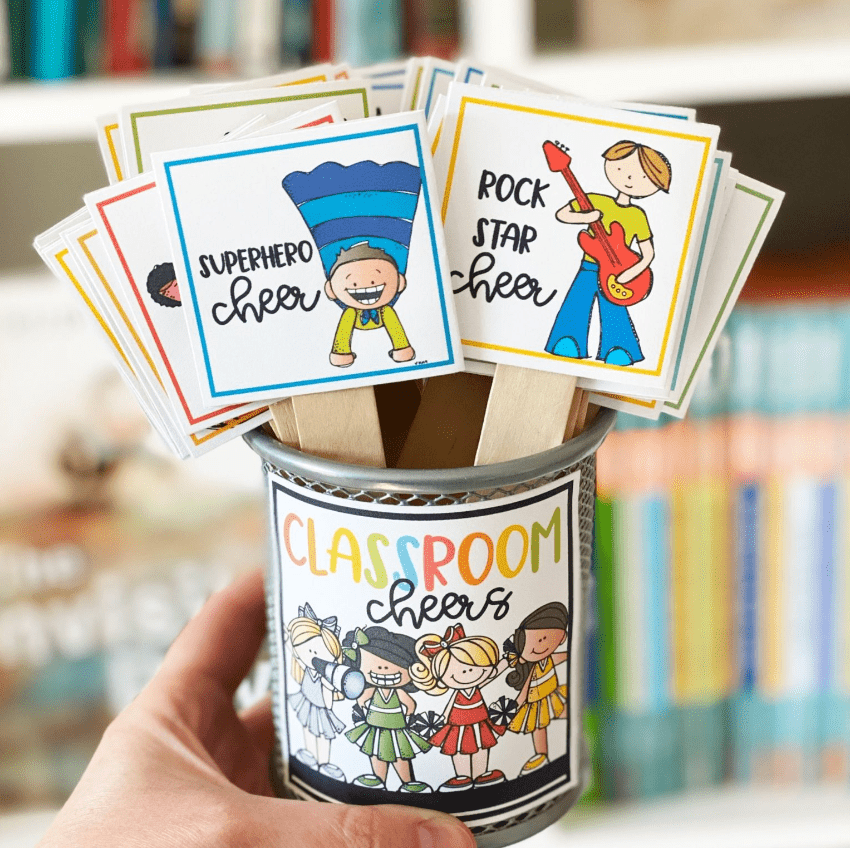Student Contributor: K.Conrad
 Classroom Cheers help build a positive relationship and attitude within the classroom between students and teachers. This contains a cup of a variety of cheers that can be preformed in order to support and encourage when our students or peers did something good that day or during an activity. They can be used to represent one individual student or the class as a whole.
Classroom Cheers help build a positive relationship and attitude within the classroom between students and teachers. This contains a cup of a variety of cheers that can be preformed in order to support and encourage when our students or peers did something good that day or during an activity. They can be used to represent one individual student or the class as a whole.
There are a variety of ways that classroom cheers can be presented or used in the classroom. We can use them after students have done work on the board, show critical thinking, present in front of the whole class, showing acts of kindness, or finished a difficult task. These cheers will help establish a positive learning environment where students feel celebrated, their confidence grows, and they feel safe to learn and try. With this support we will be able to see more participation and motivation in students work and engagement. The main way to use this tool is having the teacher look out for this different aspect to use the classroom cheer when they notice students doing good things both individually and a class as a whole. Although I also thought it would be fun to allow the students to nominate another student that they want to cheer for because of the grow or good deed they represented.
I choose this tool for the supportive stage because it allows students to feel seen and supported throughout the school day. If provides opportunity for the student and teacher to build a stronger connections and relationship with one another while also building trust and support both academically and personally. It allows students to build connections with one another by looking for the good actions or achievements they might accomplish throughout the day. With this support and acknowledgment, we will create an environment that creates positive growth and development, that will benefit all students in the classroom. Having these positive mindsets can help support both the preventative and corrective phases, with limiting any distractions or misunderstandings in the classroom.
More Information –
Tool Source: I found this idea from a website called Foxwell Forest


